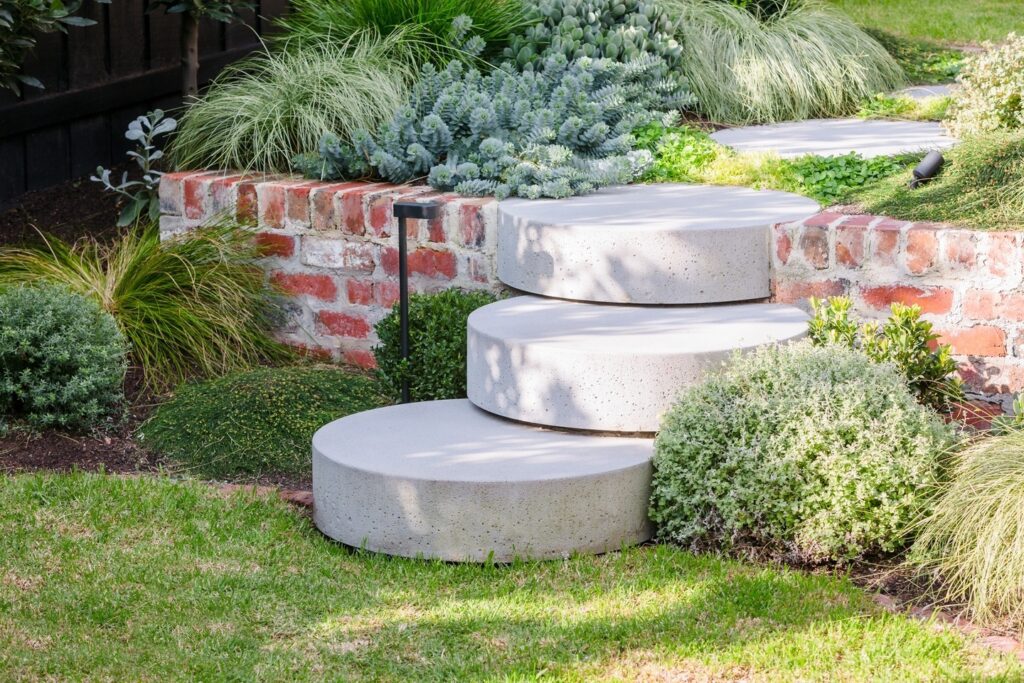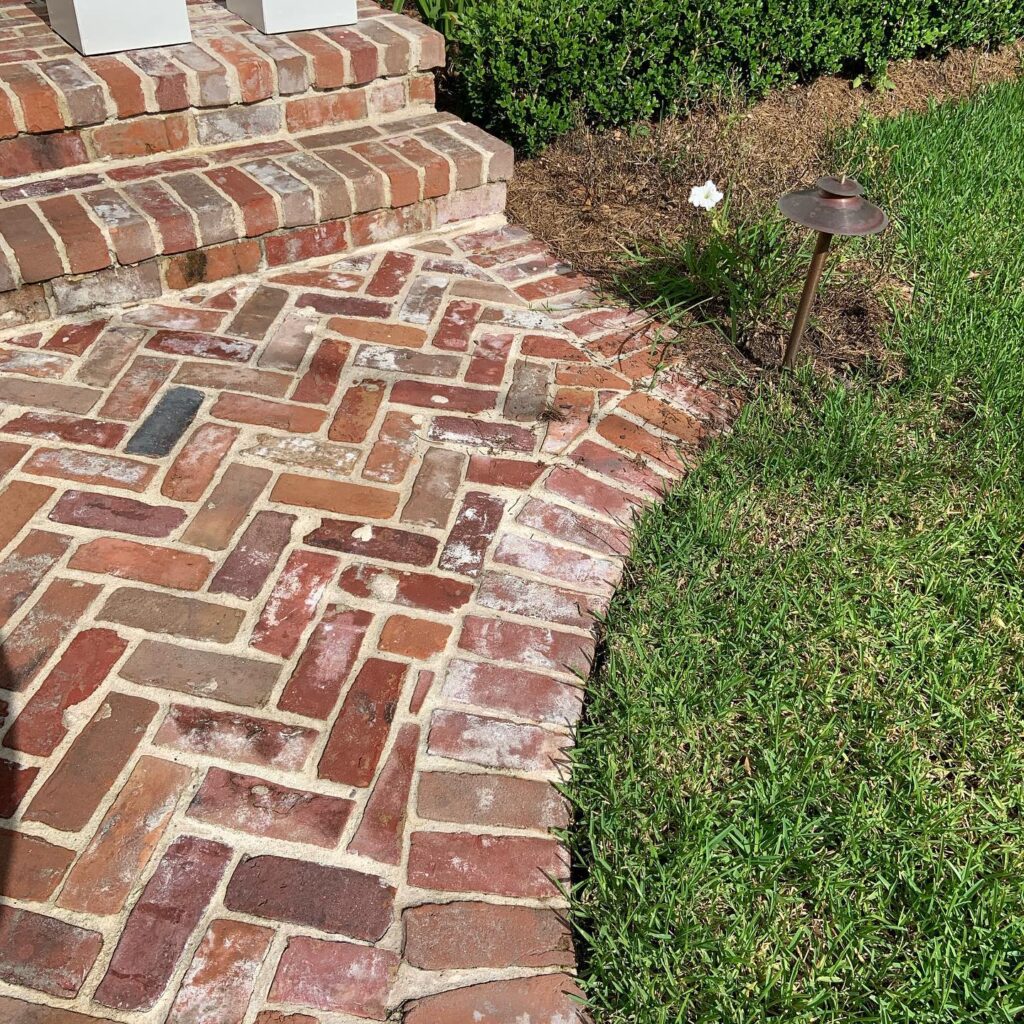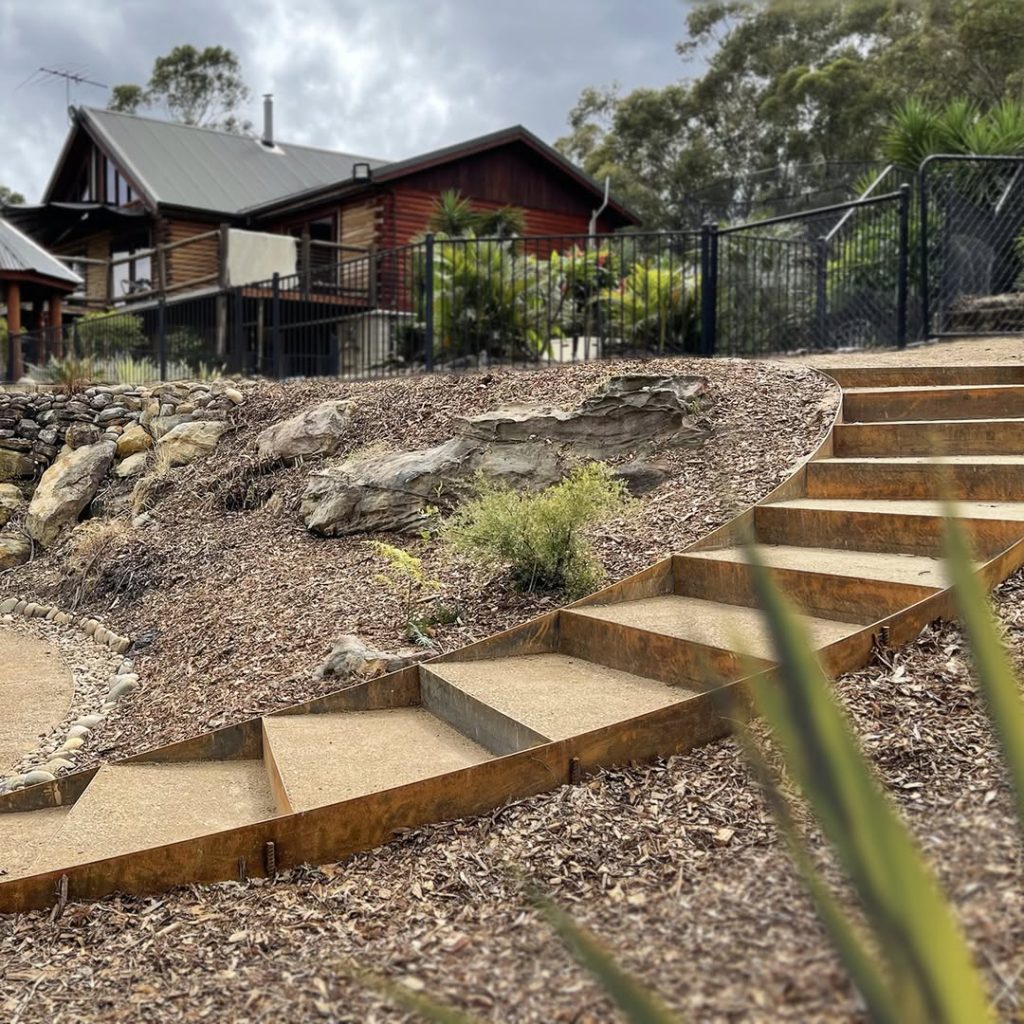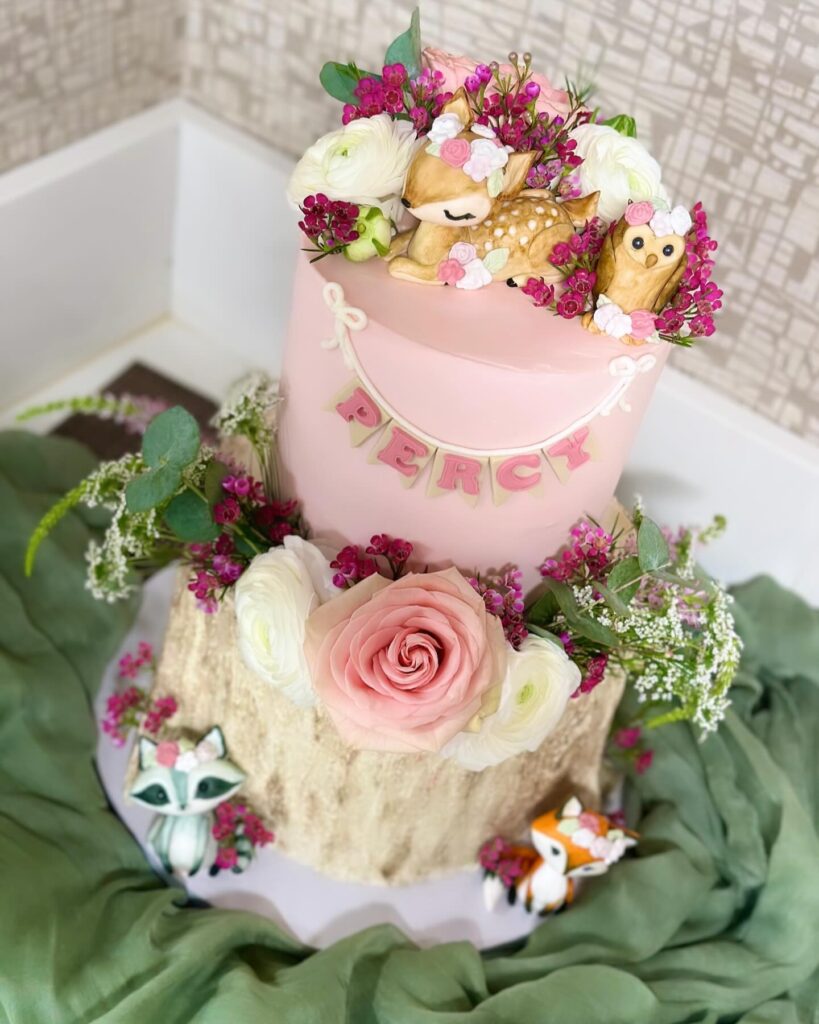Creating a well-defined garden edge can transform the entire look of your outdoor space. One of the most versatile and timeless options for garden edging is brick. Whether you’re designing a small flower bed or crafting a grand outdoor garden, brick garden edging can provide structure, beauty, and even a rustic charm. In this post, we’ll explore 17 stunning brick garden edging ideas that can elevate your backyard and give it a polished yet natural appearance.
1. Classic Brick Edging

A classic choice for garden edging is a simple brick layout that stands upright, creating a clean and defined border. This style is perfect for both traditional and modern gardens because of its versatility. Arrange your bricks in a linear formation to highlight the natural beauty of your plants and flowers, or go for a more intricate pattern to add personality to your garden.
You can opt for red or neutral-toned bricks, depending on the aesthetic of your home and outdoor space. The upright brick design offers an elegant, timeless look while still being functional. The durability of the bricks ensures that your garden borders will last for years without needing much maintenance. Add mulch or low-growing plants behind the brick border to further enhance the look.
This classic brick edging works well in various outdoor settings, from formal garden beds to relaxed landscaping designs.
2. Herringbone Brick Edging

For a more sophisticated, detailed design, consider creating a herringbone pattern with your bricks. This type of layout involves placing the bricks at a 45-degree angle, forming a “V” shape that creates a chevron-like effect. The herringbone brick pattern is elegant, and it adds texture and depth to your garden.
Herringbone brick edging works well in both modern and traditional garden settings. It’s ideal for creating a focal point or accentuating a winding path in your garden. This intricate pattern allows the bricks to stand out, making your garden borders a statement piece in your outdoor space.
Although the herringbone design requires more time and effort to install, the result is worth the extra effort. The pattern creates a visual rhythm that draws attention, making it an excellent choice for anyone wanting to elevate their garden edging with a touch of craftsmanship.
3. Curved Brick Garden Edging

A curved brick garden edge brings a sense of flow and movement to your garden design. Unlike the traditional straight line, curved brick edges can follow the natural contours of your flower beds or garden path. This organic look mimics the flow of nature and is perfect for gardens with a more relaxed or whimsical vibe.
You can use a combination of full and half bricks to create a smooth, flowing curve that perfectly matches the landscape of your garden. This style is ideal for gardens with winding paths, allowing the brick edging to mimic the soft curves of nature. Whether you choose a tight, shallow curve or a sweeping, gentle arc, a curved brick edge provides a soft yet structured boundary that helps maintain the integrity of your plants and flowers.
4. Raised Brick Garden Edging

If you’re looking for a bold way to separate your garden from the rest of your yard, consider using raised brick edging. This involves stacking bricks on top of one another to create a small raised wall. Raised brick edging is perfect for creating a clear distinction between different areas of your garden, such as separating a flower bed from a lawn or delineating a raised vegetable garden.
This type of brick edging not only provides a clean, attractive look but also helps with soil erosion by retaining the soil in place. The raised design adds dimension to your garden and can help prevent plants from spilling over into unwanted areas. It also allows for better drainage, which can help keep your garden healthy and thriving.
For a more polished look, you can choose bricks in various colors and textures, such as weathered, smooth, or reclaimed bricks. These options can complement the overall design of your garden, creating an edge that stands out beautifully.
5. Brick and Stone Mix Edging
Source
Combining bricks with natural stone can give your garden a dynamic, textured border. This mix of materials creates a rustic yet refined aesthetic that adds interest and dimension. You can alternate between bricks and stone or create a blended look by incorporating small stones between the bricks to form an intricate pattern.
This brick and stone combination works particularly well in garden designs that emphasize natural elements. The two materials complement each other beautifully, combining the solid, structured feel of brick with the organic, earthy tones of stone. This style can be used for pathways, flower beds, or even to edge a patio area, adding an element of sophistication and charm to your outdoor space.
To maintain consistency, choose bricks and stones that share similar colors or tones. This will allow them to blend seamlessly, creating a balanced and harmonious look.
6. Vertical Brick Edging
Source
Vertical brick edging adds an intriguing modern touch to any garden. Instead of stacking the bricks horizontally, they are arranged vertically to create a taller, more dramatic border. This design can make your garden appear more structured and elevated, providing a striking visual contrast to the surrounding landscape.
Vertical brick edging works particularly well in modern garden designs or minimalist spaces where clean lines and sharp angles are emphasized. This edgy style can add a sense of height and sophistication to smaller garden areas, helping to define the space without overwhelming it. The stark vertical arrangement of the bricks can also help to make the garden feel more organized, giving it a neat and tidy appearance.
If you want to soften the look, consider planting creeping vines or small flowers that can drape over the edge of the bricks. This creates a beautiful contrast between the structured design and the natural beauty of the plants.
7. Stepped Brick Edging
Source
Stepped brick edging is a creative way to add texture and movement to your garden borders. By placing the bricks in a stepped formation, you create a dynamic, layered effect that draws the eye and adds visual interest. This design works best in gardens with sloped terrain, as it allows the bricks to follow the natural rise and fall of the ground.
Stepped brick edging can help prevent soil erosion by holding the soil in place on slopes. Additionally, it provides a visually appealing structure that complements the uneven landscape. The varying heights of the bricks create a sense of depth, making your garden border feel more expansive and integrated into the surrounding landscape.
For added style, you can plant trailing plants or flowers along the stepped edges, allowing them to cascade down the layers and soften the look of the bricks.
8. Brick Garden Edging with Gravel Fill
Source
Combine the strength and durability of brick with the texture of gravel for a unique garden edging design. By laying bricks along the perimeter of your garden and filling the space between them with gravel, you can create a low-maintenance, visually interesting border that complements your outdoor space. The gravel fill helps with drainage while providing a natural, earthy feel to the garden edge.
This design works well in dry gardens or areas that experience heavy rainfall, as the gravel will help with water absorption and prevent standing water. Additionally, the contrast between the smoothness of the bricks and the rough texture of the gravel adds a layered, organic touch to your garden borders.
To enhance this design, consider choosing gravel in a color that contrasts or complements the color of the bricks. White or gray gravel can provide a light, airy look, while darker gravel can create a more grounded, rustic feel.
9. Brick Edging with Wooden Planks
Source
For a more rustic, country-inspired look, consider combining bricks with wooden planks for your garden edging. The warm tones of wood complement the sturdy, classic look of bricks, creating a harmonious balance between the two materials. This style works particularly well in cottage gardens or areas that emphasize a more natural, organic aesthetic.
Wooden planks can be placed between bricks horizontally or vertically, depending on your preference. The combination of the brick’s structure and the wood’s warmth adds an earthy charm to your garden, creating a welcoming and cozy atmosphere. The two materials also work well together, as the bricks provide stability while the wood offers flexibility and texture.
By using reclaimed wood or weathered planks, you can achieve a more rustic, weathered look that feels authentic and timeless.
10. Brick Edging with Ground Cover Plants
Source
Another fantastic way to enhance your brick garden edging is by incorporating ground cover plants in the spaces between the bricks. Ground cover plants such as creeping thyme, clover, or sedum can grow over the gaps, softening the look of the brick edge while adding color and texture to the garden. This option works well for those looking to create a more natural, eco-friendly border that integrates seamlessly with the surrounding plants.
These plants help prevent weed growth and provide a low-maintenance alternative to traditional mulching. The natural greenery growing between the bricks creates a lush, vibrant border that brings life to your garden. Ground cover plants are particularly beneficial for dry or shaded areas, as many of them are drought-tolerant and easy to care for.
For a unique touch, choose plants with varying textures and colors to create a more visually dynamic border. If you prefer a more minimalist look, you can opt for a single type of ground cover to maintain a uniform appearance.
11. Brick Edging with Pavers
Source
Mixing bricks with pavers is a brilliant way to combine different textures and colors in your garden edging. The uniformity of pavers, along with the irregularity of bricks, creates a visually appealing contrast that adds dimension and complexity to your garden borders. Pavers can be placed in a variety of formations, from simple straight lines to more intricate, curved patterns, depending on the aesthetic you prefer.
This style allows you to play with different colors and materials to match your outdoor décor. You can use uniform-sized pavers and intersperse them with different-sized bricks for added visual interest. The combination of both materials works wonderfully in contemporary gardens, where clean lines and sharp contrasts are often the focal points.
Additionally, pavers provide a sturdy, level base for walkways or garden paths, allowing you to expand beyond just the edges and into the main body of the garden.
12. Zigzag Brick Edging
Source
For a fun, eye-catching design, consider using a zigzag pattern for your brick garden edging. This unique layout involves placing the bricks at sharp angles to create a dynamic, zigzag effect that draws attention to your garden’s borders. It works especially well in gardens that embrace a playful or eclectic style.
Zigzag brick edging creates a sense of movement and energy in your garden design. It is ideal for gardens with bold, colorful plants, as the angular pattern complements the vibrant hues. You can also use this pattern to create a more informal look, or to highlight a specific feature such as a flower bed or a small pathway.
This design does require a bit more precision and planning than simple straight or curved lines, but the end result will be a striking and original border that adds a fun, artistic touch to your garden.
13. Brick Edging with Stained Glass Inserts
Source
If you want to add an unexpected pop of color to your garden, consider incorporating stained glass inserts between your bricks. This whimsical and artistic approach can turn your garden edging into a beautiful piece of outdoor art. The colorful stained glass brings an element of creativity and elegance to the traditional brick, giving your garden a vibrant and unique edge.
Stained glass inserts can be placed at regular intervals or sporadically along the brick border. The translucent, shimmering nature of stained glass creates beautiful reflections as the sunlight hits it, making your garden edge come alive throughout the day. This design works well in gardens with a more artistic, bohemian, or eclectic feel, as it adds a personal touch to your outdoor space.
To make sure the stained glass fits seamlessly with the bricks, you can choose glass pieces in colors that complement the natural tones of the bricks, or go for a more bold, contrasting look to create a dramatic statement.
14. Brick Edging with Pebbles
Source
For a more natural, beach-inspired look, combine bricks with pebbles to create a distinctive garden edge. The pebbles fill the gaps between the bricks, adding texture and a casual, laid-back feel to the border. This style is perfect for coastal-inspired or bohemian gardens, where natural materials take center stage.
Pebbles can be used in a variety of ways. You can scatter them loosely between the bricks for a relaxed look, or create a more structured pattern by arranging them in rows or circular designs. The combination of the warm, solid look of bricks with the smooth, polished texture of pebbles creates a visually interesting contrast that feels both earthy and elegant.
Additionally, the pebbles help with drainage and prevent weed growth, making this an eco-friendly and low-maintenance choice for garden edging.
15. Inlaid Brick Edging
Source
For a more refined and professional-looking border, consider inlaying bricks into your garden’s soil to create a seamless, flush edge. This technique involves digging a trench and placing the bricks so that their tops are level with the ground. The inlaid bricks are often used to create a more cohesive, smooth transition between garden areas and other outdoor spaces.
This technique works best when you want to create a clean, polished look for your garden edges, especially when you’re dealing with formal landscaping or structured garden beds. The flush design eliminates any raised edges that could disrupt the flow of the landscape, giving it a sleek and smooth appearance.
Inlaid brick edging is perfect for minimalist or modern garden designs, as it creates a subtle yet elegant outline for your garden beds and pathways.
16. Brick Edging with Mosaic Pattern
Source
If you’re looking to make a bold, artistic statement with your garden edging, try incorporating a mosaic pattern with your bricks. This design involves creating a colorful, patterned arrangement using various types and colors of bricks. The mosaic can be anything from simple geometric shapes to more intricate, artistic designs such as flowers, waves, or other patterns.
A mosaic brick edging adds a personal touch to your garden, making it stand out as a unique and creative space. You can choose from a variety of different brick types, including reclaimed bricks or those with distinct textures, to create a more personalized mosaic. This type of edging works especially well in gardens that embrace an eclectic, artsy style.
Mosaic patterns require careful planning and attention to detail, but the finished product will be a one-of-a-kind garden border that adds charm and flair to your outdoor space.
17. Brick Edging for Raised Garden Beds
Source
For gardeners who want to create a more defined and elevated flower bed, brick edging works beautifully around raised garden beds. The sturdy structure of the bricks provides stability to the raised bed while also giving it a clean, neat appearance. Whether you choose a single layer of bricks or stack them to create a taller border, brick edging ensures that the soil stays contained and your plants remain safe from surrounding grass or weeds.
Raised garden beds are perfect for small spaces, urban gardens, or anyone who wants to minimize bending over while gardening. Brick edging adds a timeless look to the beds while also making the entire setup more cohesive. You can use a single row of bricks for a more subtle effect or stack them for a higher, more prominent edge.
Conclusion
Brick garden edging is an excellent choice for adding both style and function to your outdoor space. Whether you prefer a classic, straight line or an intricate mosaic, there are endless ways to incorporate bricks into your garden design. From creating clean, defined borders to adding textural contrasts with other materials, brick edging can suit a variety of garden styles and personal preferences.
As you explore these 17 brick garden edging ideas, consider your garden’s overall aesthetic, the materials you love, and how much maintenance you’re willing to do. With the right combination of bricks, your garden’s edges will not only look stunning but will also add long-lasting value to your outdoor space. Happy gardening!

